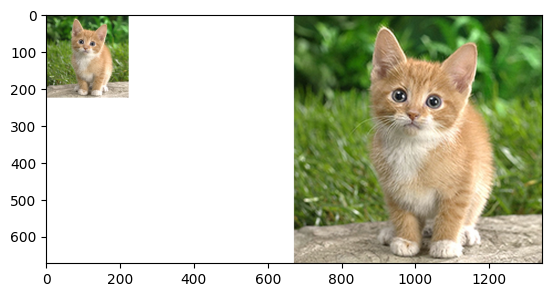# %%shell
# # Installs the latest dev build of TVM from PyPI. If you wish to build
# # from source, see https://tvm.apache.org/docs/install/from_source.html
# pip install apache-tvm --pre
编译 ONNX 模型#
作者: Joshua Z. Zhang
本文是使用 Relay 部署 ONNX 模型的入门教程。
安装一些包:
%%bash
pip install onnx onnxoptimizer
或者直接访问 ONNX 官方网站。
import onnx
import numpy as np
import tvm
from tvm import te
import tvm.relay as relay
from tvm.contrib.download import download_testdata
加载预训练 ONNX 模型#
这里使用超分辨率模型 super_resolution_with_caffe2,并下载保存的 onnx 模型:
model_url = "".join(
[
"https://gist.github.com/zhreshold/",
"bcda4716699ac97ea44f791c24310193/raw/",
"93672b029103648953c4e5ad3ac3aadf346a4cdc/",
"super_resolution_0.2.onnx",
]
)
model_path = download_testdata(model_url, "super_resolution.onnx", module="onnx")
# now you have super_resolution.onnx on disk
onnx_model = onnx.load(model_path)
加载测试图片#
该模型输入大小为 \(224 \times 224\) 的单个输入图像,并沿每个轴输出比输入大 \(3\) 倍的缩放图像,即 \(672 \times 672\) 图像。重新缩放猫图像以适应这个输入形状,然后转换为 YCbCr。然后将超分辨率模型应用于亮度 (Y) 通道。
from PIL import Image
img_url = "https://github.com/dmlc/mxnet.js/blob/main/data/cat.png?raw=true"
img_path = download_testdata(img_url, "cat.png", module="data")
img = Image.open(img_path).resize((224, 224))
img_ycbcr = img.convert("YCbCr") # convert to YCbCr
img_y, img_cb, img_cr = img_ycbcr.split()
x = np.array(img_y)[np.newaxis, np.newaxis, :, :]
使用 relay 编译模型#
通常,ONNX 模型将模型输入值与参数值混合在一起,输入名称为 1。此模型依赖于,您应该检查您的模型的文档,以确定完整的输入和参数名称空间。
将 shape 字典传递给 from_onnx() 方法,告诉 relay 哪些 ONNX 参数是输入,哪些是参数,并提供了输入大小的静态定义。
target = "llvm"
input_name = "1"
shape_dict = {input_name: x.shape}
mod, params = relay.frontend.from_onnx(onnx_model, shape_dict)
with tvm.transform.PassContext(opt_level=1):
executor = relay.build_module.create_executor(
"graph", mod, tvm.cpu(0), target, params
).evaluate()
在 TVM 上执行#
dtype = "float32"
tvm_output = executor(tvm.nd.array(x.astype(dtype))).numpy()
展示结果#
将输入图像和输出图像放在一起。亮度(luminance)通道 Y 是模型的输出。调整色度(chroma)通道 Cb 和 Cr 的大小,以匹配简单的双三次算法(bicubic algorithm)。然后将图像重新组合并转换回 RGB。
from matplotlib import pyplot as plt
out_y = Image.fromarray(np.uint8((tvm_output[0, 0]).clip(0, 255)), mode="L")
out_cb = img_cb.resize(out_y.size, Image.BICUBIC)
out_cr = img_cr.resize(out_y.size, Image.BICUBIC)
result = Image.merge("YCbCr", [out_y, out_cb, out_cr]).convert("RGB")
canvas = np.full((672, 672 * 2, 3), 255)
canvas[0:224, 0:224, :] = np.asarray(img)
canvas[:, 672:, :] = np.asarray(result)
plt.imshow(canvas.astype(np.uint8))
plt.show()

备注
默认情况下,ONNX 根据动态形状定义模型。ONNX 导入器在导入时保留这种动态性,而编译器试图在编译时将模型转换为静态形状。如果失败,模型中仍然可能有动态操作。并不是所有的 TVM 内核目前都支持动态形状,如果您在使用动态内核时遇到错误,请在 discuss.tvm.apache.org 上提交 issue。
这个特定的模型是使用旧版本的 ONNX 构建的。在导入阶段,ONNX 导入器将运行 ONNX 验证器,这可能会抛出 Mismatched attribute type 警告。因为 TVM 支持许多不同的 ONNX 版本,所以 Relay 模型仍然有效。
